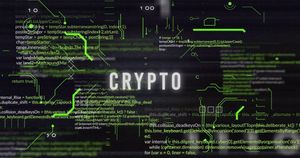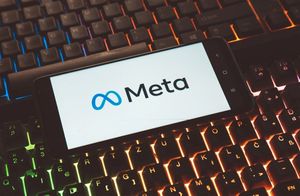
Reprinted from the Katusa’s Investment Insights newsletter
Most corporations in the S&P 500 are in the business of actively destroying their own capital. It’s their only option. They have to hold cash and cash equivalents, their “treasury”, as a buffer to make payments and for strategic flexibility.
Corporate treasuries are generally invested in “risk-free” Treasury bills or money market funds. They’re both convenient short-term parking spaces for cash. Only they destroy cash’s value. The compound annual growth rate on T-Bills over the past century is a paltry 3.4%, before inflation and the erosion of value from money printing.
Using T-Bills to preserve capital is like trying to keep an ice cube cold on a summer day by … holding it. They just barely slow the inevitable decline in a corporate treasury’s value.
Even before the downgrading of U.S. debt by Fitch and S&P, traditional Treasury investments have not been as “risk-free” as they might seem. They effectively force companies to pay for the privilege of losing purchasing power to inflation.
On top of that, investors expect a certain rate of return, usually the 10% average return of the S&P 500. If a company earns 4% on T-Bills and investors expect 10%, the corporate cash reserves are no longer an asset. They’re just a drag on returns, a liability in disguise.
But there’s a single commodity, an asset with no issuer, that has:
- a perfectly fixed supply (like gold)
- zero inflation/debasement (unlike currency)
- global, 24/7 markets and
- deep liquidity (and growing deeper)
Those attributes alone make it seem well-suited to replace T-Bills in Treasury holdings. But there’s another element actively afflicting public companies, and it’s making that new commodity a necessary holding.
The S&P 493: wealth destruction in slow motion
Over the past decade, the S&P 500’s performance has been driven almost entirely by the “Magnificent 7”: Alphabet, Amazon, Apple, Meta, Microsoft, Nvidia and Tesla. They’ve had an average CAGR of 47% per year. The CAGR of the other 493 stocks? Just 7%. With that kind of performance, capital is naturally flowing away from the S&P 493 and toward the Mag 7.
A decade ago, the Mag 7 were less than 10% of the S&P 500. Now, 1 in 3 dollars in the index is concentrated in just those 7 companies.

Meanwhile, the S&P 493 is bleeding out. Liquidity is drying up, options are going dark, and raising capital is becoming more difficult. IPOing has gone from a dream to a nightmare, unless a corporation can somehow keep up with the growth rates of the Magnificent 7.
493 of the best companies in the world have cash hoards that are losing value by the minute, stuck in Treasury bills that are barely keeping their nose above water. And they’re achieving atrocious returns by top-of-market standards. Which is why they’re beginning to buy the commodity whose performance is blowing everything else out of the water, including the Magnificent 7:

Bitcoin isn’t just the antidote to the treasury problem, providing a store of capital, along with liquidity, flexibility, and financial stability. For the first time, bitcoin levels the playing field, letting every public company compete with the big tech stocks. Because of this, bitcoin is providing an all-new kind of return for corporations and it’s going to take their cash.
Treasuries go to Bitcoin Rate of Return
Instead of the meager T-Bill rates, companies are converting their treasuries to bitcoin to achieve the new benchmark: BRR (Bitcoin Rate of Return).
Here’s what the BRR has looked like over the typical 1-, 3-, 5-, and 10-year timeframes:

Positioning treasury reserves in BTC, provided it continues to appreciate near historical rates, looks to outpace the cost of capital from investor expectations by a wide margin. It turns cash and cash equivalents from a headwind into a growth engine, from a “dead” asset into an appreciating asset. Instead of destroying shareholder value, it creates massive new growth.
Here’s what growth looks like for a $1M treasury parked in T-Bills vs. BTC from 2020 to today:

There’s no error in that graph: The T-Bills would be worth about $1.1M. The BTC would be worth almost $10M. This is a complete paradigm shift of treasury management from futile capital “preservation” to actual capital growth.
This isn’t just the largest financial innovation since the S&P 500. Because as each marginal company puts bitcoin on their balance sheet, the performance of the S&P index will move toward that of bitcoin. In other words, bitcoin effectively is the new S&P 500. The real risk now comes not from buying crypto, but from ignoring the new treasury benchmark: BRR.
Survival of the HODLest
So how will this unfold?
The leveraged companies making the news by raising billions to buy bitcoin are flashes in the pan. The majority that have gone public this year have fallen by half or more. And it won’t be the top of the S&P 500. They can afford for their cash to not be high-growth. Both they and their investors have roundly rejected the idea.
It’ll start with the bottom 98% of the S&P 500, especially companies that are about to get delisted. Just like a few crazy people did in the early 2010s, they’ll convert some of their cash into crypto. It’ll be a financial strategy, not speculation.
As the price of bitcoin continues to rise, it’ll quickly become obvious that they’re gaining on their peers. Their performance will start to approach that of big tech. And with a burgeoning balance sheet, they’ll have more capital to reinvest, acquire or undercut their competitors.
Companies still holding cash and T-Bills will look like they dozed off at the wheel. They’ll have to buy bitcoin to keep up as long as it’s not too late.
Because once a critical mass moves, not moving will become a liability. Laggards will be punished by the market. And every marginal adoption will make Bitcoin more stable, more secure and more attractive as a treasury asset.
Katusa Research is actively tracking this new commodity market set to capture corporate treasuries.
And when we see a real opportunity, you’ll be the first to know.
More from Marin Katusa: Silver isn’t precious anymore, just critical






